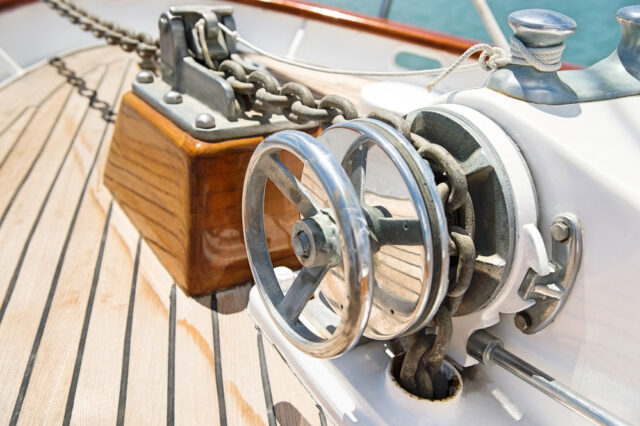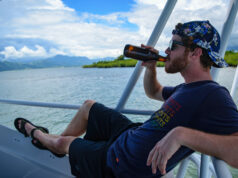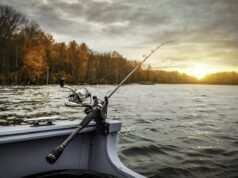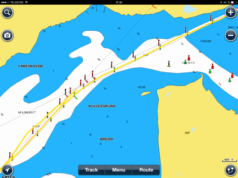Dropping the hook does not necessarily mean safe anchorage; too long and you run the risk of your boat swinging to hit other yachts; too short, and the boat drags dangerously. Therefore, determining the optimal anchorage length is exceedingly significant. Furthermore, in tidal waters, one must consider the changing levels of water and the wind. There are places in the Bristol Channel where tidal waters fluctuate with a range of up to 50ft. Consequently, determining the correct length for your anchor chain becomes the difference between safe docking and accident risk. So many people ask, ‘how long should my anchor chain be?’ Well, this article will provide specific details that would help anyone find the ideal length for their anchor chain.
The Optimal Anchorage Depth
All modern boats are equipped with an electronic depth sounder. When looking to dock, the sounder displays the depth between the seafloor and the transducer. However, the boat operator can enter other parameters to be displayed, such as the keel offset, surface offset, and the height of the bow to be displayed before anchoring the boat. Still, that information varies from one skipper to another. It is, however, more accurate to consider all the parameters when determining the precise length of chain needed for a safe dock. The boat operator can then calculate the proper distance for the anchor chain by adding the required parameters to establish an adequate docking depth. By considering those elements, anyone can answer the question ‘how long should my anchor chain be?’ successfully.
Determining the Length
The operative depth is the distance between the height of the bow and the seafloor. To properly establish that length, the skipper will add the height of the bow, surface offset, keel offset, and the distance between the lowest part of the boat. Any miscalculations and the vessel runs the risk of swinging or dragging to other areas. Therefore, docking is not just about finding the figures. It is also about determining what figures are necessary when calculating the precise depth of anchorage and conducting an accurate calculation. Furthermore, the measures must consider the rising and falling sea levels, including the anticipated wind speeds. It is nearly impossible to account for all elements of the anchorage equation. Still, it is imperative to consider the most vital aspects, such as the adequate docking depth, the rising sea levels, and wind speeds.
Wind Consideration
The optimal safe docking length reduces the chances of accidents. In crowded areas, establishing an absolute satisfactory depth becomes a necessity. Some experienced captains have proposed a wind-only formula based on their voyage experiences. For instance, they have suggested that the adequate depth will be calculated by adding the docking length and the wind speed. The formula is suitable for depths below 10m. Beyond that, the effective docking length will be calculated using 1.5x the wind speed. Determining the apposite depth without accounting for wind speed may move the boat and unhook the anchor below, resulting in excess drag, which increases the risk of accidents.
Tide Calculation
Areas with extreme tidal fluctuation require attentive consideration measures-docking at low tide, high tide, and in-between need numerous considerations. Docking a boat properly necessitates an in-depth understanding of the tidal range, which is the variance between the height of low and high tides. An accurate evaluation and recognition of the wave is essential due to the variation from high tide, low tide, incoming tide, and outgoing tide. The tide calculation requires the conversion of tidal force into windspeed. The conversion then considers the strength of the incoming or outgoing water resulting in a more secure dock.
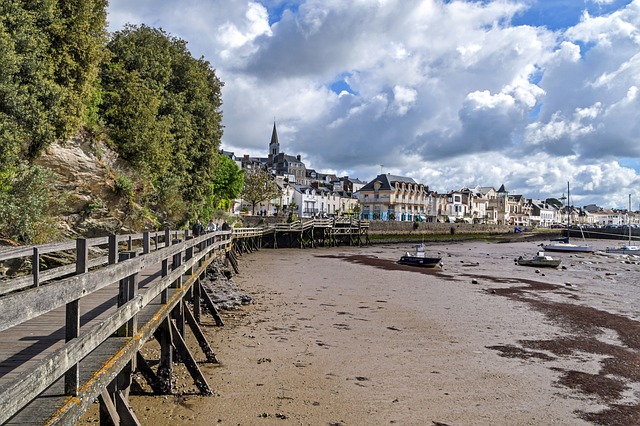
Ensuring there is enough slack to counter any yawing at anchor will secure the boat to the floor. However, the calculation of that length needed to provide that flexibility yet hold the boat securely is very challenging given the need to consider other changing parameters. Other vital parameters that also affect docking include the size of the boat, the size of the water body, and the nature of the seafloor.
Types of Anchors
Surprisingly, the type of anchor also determines the length of the anchor chain needed to make a secure dock. For instance, overloaded or small boats may not have adequate space to store appropriate-sized anchors forcing them to carry smaller anchors that require longer anchor lines. In such scenarios, the captains must then use smaller anchors, which do not hold appropriate holding power. The weight and size of an anchor depend on the length of a boat. Some experts have proposed that the length of the boat coincides with the length of the anchor chain. However, individuals who use hurricane boat anchors may use shorter anchor lengths. Typically, the hurricane boat anchor suggests a ratio of 2:1. The ratio shows that the hurricane boat anchors use an effective depth double the depth of the water body. For instance, in 20-feet deep water, they should anchor 40 feet. The best anchors are quick and easy to set up and optimize the time spent on the water. In a rocky seabed, weeds and grass, plow anchors are ideal because they hold well in soft bottoms. Selecting a suitable anchor becomes essential in increasing the docking power of the boat. Unlike hurricane boat anchors that use a scope ratio of 2:1, plow anchors require an optimal scope ratio of 5:1. The scope ratios are vital in determining the anchor chain length because anchors do not dock perpendicular to the floor. They always dock at an angle, preferable between 15 and 20 degrees, to ensure the chain digs into the floor and provide maximum holding power. The type of anchor, length of the boat, and the nature of the seabed determine the length of the anchor chain.
How long should my anchor chain be? well, It depends on a variety of variable and invariable elements. The invariable aspects such as length of boat and type of anchor are reasonably easy to evaluate. However, the variables include the tide, the nature of the seafloor, and the load. Once the boat operator has considered all those elements, he or she can begin making calculations to determine the actual docking depth. Securing a boat is not easy, even for professionals, especially in turbulent waters. Regardless of the difficulty, boat owners must learn how to select the best equipment for their anchorage.


